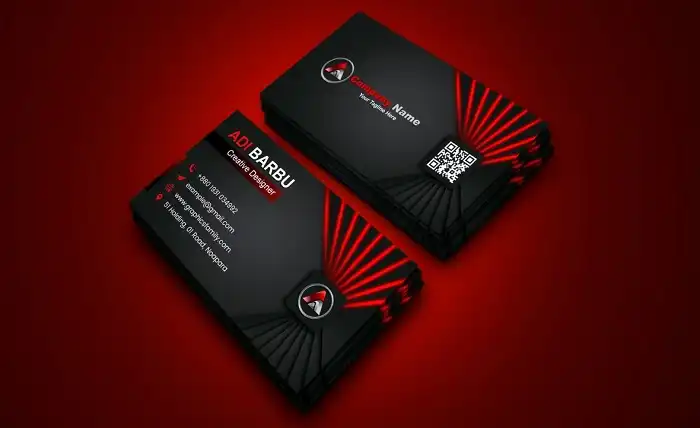How to Design a Business Card that Stands Out in 2023

A business card is a small piece of paper or plastic that contains your name, contact information, and other details about your business or profession. A business card can help you make a good first impression, promote your brand, and network with potential customers, partners, or employers. However, with so many business cards out there, how can you design a business card that stands out and gets noticed in 2023? In this blog post, I will share some tips and examples on how to design a business card that stands out in 2023.
What to Include on Your Business Card
Before you start designing your business card, you need to decide what information to include on it. You want to include enough information to convey your identity and value proposition, but not too much information to clutter or confuse your card. Here are some of the essential elements that you should include on your business card:
- Your name: This is the most important element of your business card, as it tells people who you are and what you do. You should use your full name or a professional nickname that reflects your brand and personality. You should also use a clear and legible font that matches your style and industry.
- Your logo: This is the visual representation of your brand and business. You should use a logo that is simple, memorable, and relevant to your products or services. You should also use a logo that is scalable and adaptable to different sizes and formats.
- Your contact information: This is the information that people can use to reach out to you or learn more about you. You should include the most relevant and preferred contact methods for your target audience, such as your phone number, email address, website, or social media handles. You should also use icons or symbols to indicate the type of contact information that you provide.
- Your tagline or slogan: This is a short phrase or sentence that summarizes your value proposition or unique selling point. You should use a tagline or slogan that is catchy, concise, and compelling. You should also use a tagline or slogan that highlights your benefits, solutions, or differentiators.
How to Design Your Business Card
After you have decided what information to include on your business card, you need to design how it looks and feels. You want to design a business card that is attractive, professional, and consistent with your brand identity. Here are some of the design aspects that you should consider for your business card:
- Size and shape: The standard size for a business card is 3.5 x 2 inches, but you can also choose a different size or shape that suits your needs and preferences. For example, you can choose a square, round, or oval shape for your business card to make it more distinctive and eye-catching. However, you should also consider the practicality and convenience of your card size and shape, as it may affect how people store or carry it.
- Color and contrast: The color and contrast of your business card can affect its mood, tone, and readability. You should use colors that are appropriate for your industry, audience, and message. You should also use colors that are compatible with your logo and other elements on your card. You should also use contrast to create visual hierarchy and emphasis on your card. For example, you can use dark text on a light background or vice versa to make it easier to read.
- Layout and alignment: The layout and alignment of your business card can affect its balance, harmony, and clarity. You should use a layout that is simple, organized, and symmetrical for your card. You should also use an alignment that is consistent and aligned with the edges of your card. For example, you can use a grid system to arrange the elements on your card in rows and columns.
- Typography and spacing: The typography and spacing of your business card can affect its style, personality, and legibility. You should use fonts that are clear, legible, and suitable for your industry, audience, and message. You should also use fonts that are compatible with each other and with other elements on your card. You should also use spacing that is adequate and proportional for your card. For example, you can use white space to create breathing room and focus on your card.
How to Print Your Business Card
The final step of designing your business card is to print it out and distribute it to your contacts. You want to print a business card that is high-quality, durable, and eco-friendly. Here are some of the printing aspects that you should consider for your business card:
- Material: The material of your business card can affect its texture, weight, and durability. You should choose a material that is sturdy, smooth, and resistant to wear and tear. You should also choose a material that is eco-friendly, such as recycled paper or biodegradable plastic.
- Finish: The finish of your business card can affect its appearance, feel, and protection. You should choose a finish that is glossy, matte, or textured for your card. You should also choose a finish that is UV-coated, laminated, or embossed for your card.
- Printing method: The printing method of your business card can affect its quality, cost, and speed. You should choose a printing method that is digital, offset, or letterpress for your card. You should also choose a printing method that is suitable for your quantity, budget, and deadline.
To print your business card, you can use online tools such as [Vistaprint] or [Moo] that offer online design and printing services for business cards. You can also use online tools such as [Canva] or [Adobe Spark] to create and download your own business card design and print it yourself or at a local print shop.
Conclusion
A business card is a small piece of paper or plastic that contains your name, contact information, and other details about your business or profession. A business card can help you make a good first impression, promote your brand, and network with potential customers, partners, or employers.




